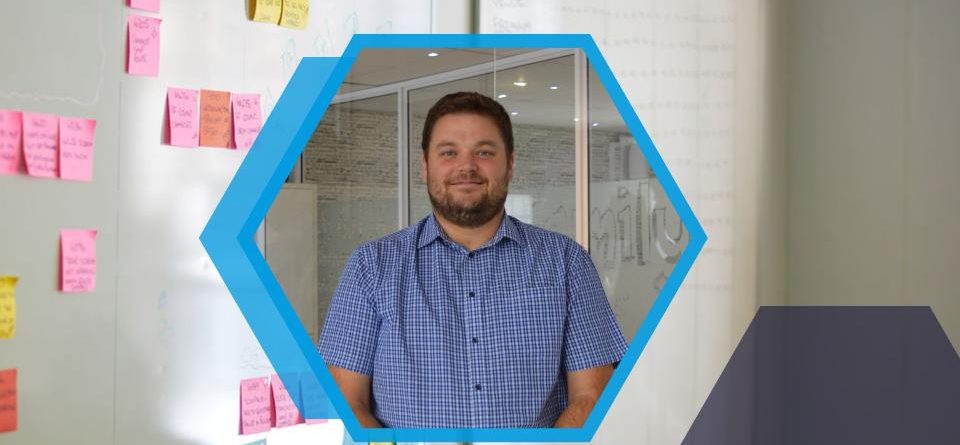Why Custom Software Still Matters
How Architecture Choices for Custom Software Could Make or Break Your Project
By Daniel Barrett, Software Architect at Saratoga. When you need to build or modernise your systems, it can be tempting to reach for something off the shelf. But while ready-made solutions might tick some short-term boxes, they often come with long-term trade-offs, especially when your business starts to grow or evolve. That’s why custom software development is still such a powerful strategic tool.
Custom software development allows you to build exactly what your business needs, and leaves off what it doesn’t. Just as important as the custom software itself, is how that software is built. At Saratoga, we’ve seen firsthand how architecture decisions like choosing between a monolith or microservices can make the difference between smooth scaling and operational gridlock. Here’s what that means for your business.
Custom Software Development, Built for the Way You Work
Custom software is less about reinventing the wheel and more about making sure the wheel fits your vehicle. Off-the-shelf solutions usually force businesses to adapt their operations to fit the software. Custom software does the opposite. It adapts to your business model, your teams, and your growth plans.
But architecture matters. Whether you’re building new software or modernising a legacy system, the structure behind it determines:
- How fast you can respond to change
- How reliably your systems run
- How costly future updates will be
- How scalable and secure your software will be in the long run
Which brings us to the two most common architectural approaches: monoliths and microservices.
Monoliths: Reliable, But Rigid
If you’ve been in business for more than a few years, chances are you’re running on, or have run on, a monolithic system. This means everything is built as one tightly connected application.
This approach is great when
- You’re starting small
- You need to move quickly
- You’re not dealing with complex operations or high volumes
But as your business grows, you may run into issues
- Every change requires touching the whole system
- One bug can impact the entire platform
- Scaling becomes expensive and inefficient
- Tech debt builds up over time
Monoliths work well until they don’t. And many of our clients come to us at exactly that tipping point.
Microservices: Flexible, Scalable, Built to Evolve
Microservices break your software into smaller, modular components, each focused on a single business function, like billing, stock control, or reporting.
With microservices, you gain
- Faster development cycles – Teams can work on parts independently
- Scalability – Grow only the parts of the system that need it
- Resilience – If one service fails, the others keep running
- Flexibility – Introduce new features without disrupting the whole system
But this model also needs strong technical oversight. Poorly designed microservices can become complex and expensive to manage. That’s why it’s essential to have the right development partner, like Saratoga, to guide your architectural decisions.
The Business Case for Custom Architecture
Custom software is an investment, but not just in code. It is an investment into the operational backbone of your business. That foundation needs to support your growth plans, not restrict them. Which means, the investment consideration should be less about ‘how quickly and affordably can we get this done?’ but ‘how experienced and business-savvy is this software development partner?’
Related: Custom Software Development: The True Cost of Successful Project Delivery
Done right, a modern, well-architected system gives you
- Speed to market – Release new features or services faster
- Competitive edge – Build functionality tailored to how you operate
- Lower total cost of ownership – Reduce future rework, delays, and vendor lock-in
- Operational efficiency – Automate the right things, integrate smoothly with other tools
- Confidence to scale – Systems that evolve as fast as your business does
As one of the top software development companies in South Africa, we’ve helped organisations across sectors modernise monolithic systems, migrate to microservices, and build new platforms that align with business strategy, not just technical requirements.
Whitepaper: Top 10 Countries for Outsourcing Software Development
Deploy Architecture As a Strategy
Your software should be an enabler, not something you have to ‘deal with’. And the architecture behind that software is one of the most strategic decisions you’ll make. Whether you stick with a monolith or move to microservices, the right choice depends on where your business is today, and where you want to go next.
That’s where Saratoga comes in. Our custom software teams partner with you to build what’s needed. For today, and for what comes next.
Considering Custom Software or Modernising Your System? Let’s Talk.
We’ll help you build the right foundation, so you can move faster, scale smarter, and stay ahead.
FAQs
1. What is custom software development?
Custom software development is the process of creating software tailored to your organisation’s exact needs—from initial consultation, design, and build, through to deployment, support, and maintenance. Unlike off-the-shelf solutions like standard CRMs or ERPs, custom software is built specifically for your workflows, systems, and long-term goals, offering unmatched flexibility, integration, and competitive advantage.
2. What does “CSD” mean in software development?
In this context, CSD stands for Custom Software Development (sometimes also called bespoke or tailor‑made software). It emphasises that the software is uniquely designed and built for your specific organisational requirements, covering everything from custom features and user experience to specialised integrations and scalability .
3. Is software development, or software developers, in demand in South Africa?
Yes. Software development remains in strong demand in South Africa, particularly in areas like full-stack engineering, cloud solutions, AI, data analytics, cybersecurity, and system architecture. Choosing custom software development means partnering with a skilled team (like Saratoga) that will:
- Understand your unique needs and build solutions that grow with your business.
- Ensure smooth integration with existing systems and workflows.
- Provide long-term ownership, avoiding licensing surprises or vendor lock-in.
- Tap into local expertise, hiring developers in today’s high-demand but growing South African tech market.







